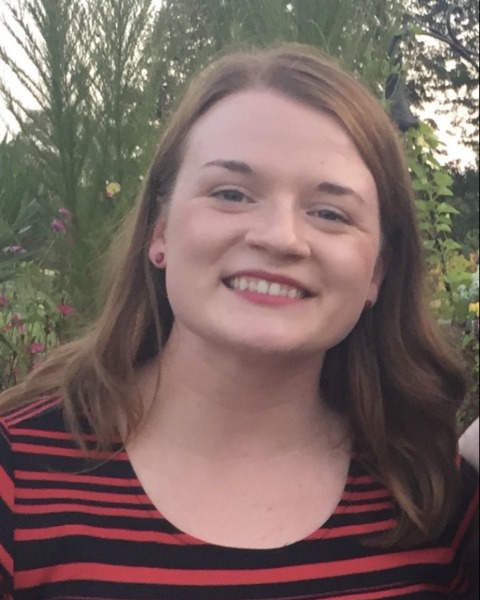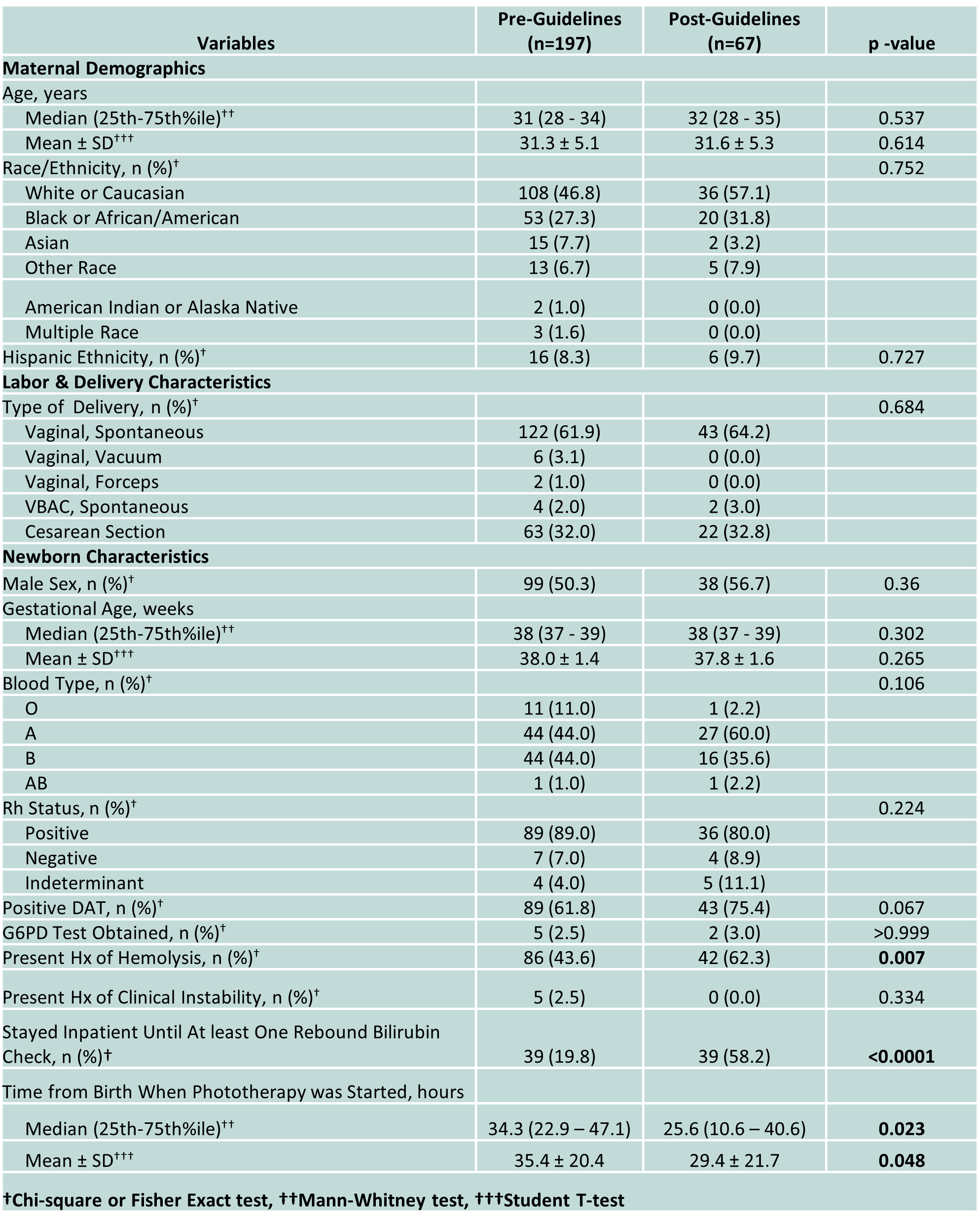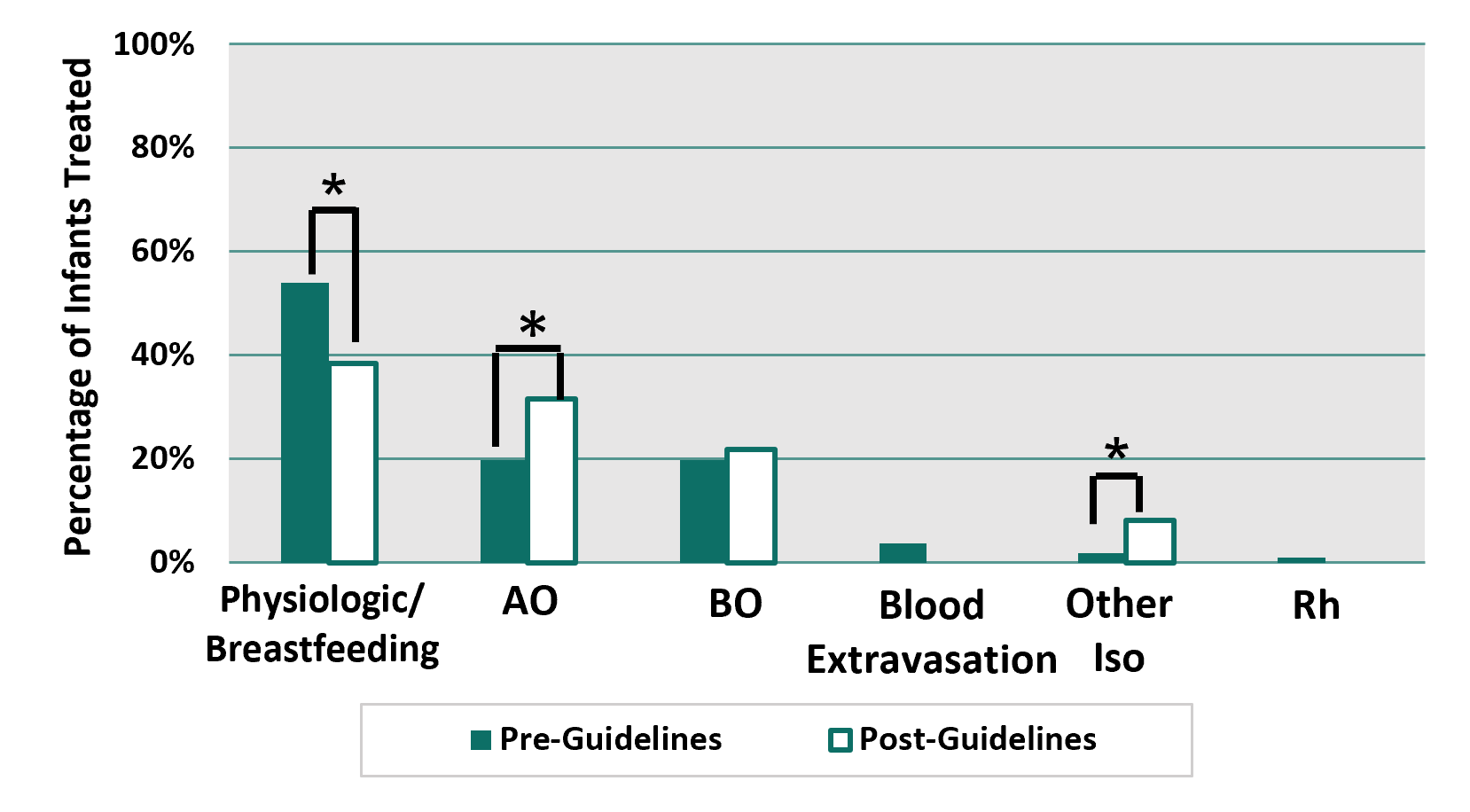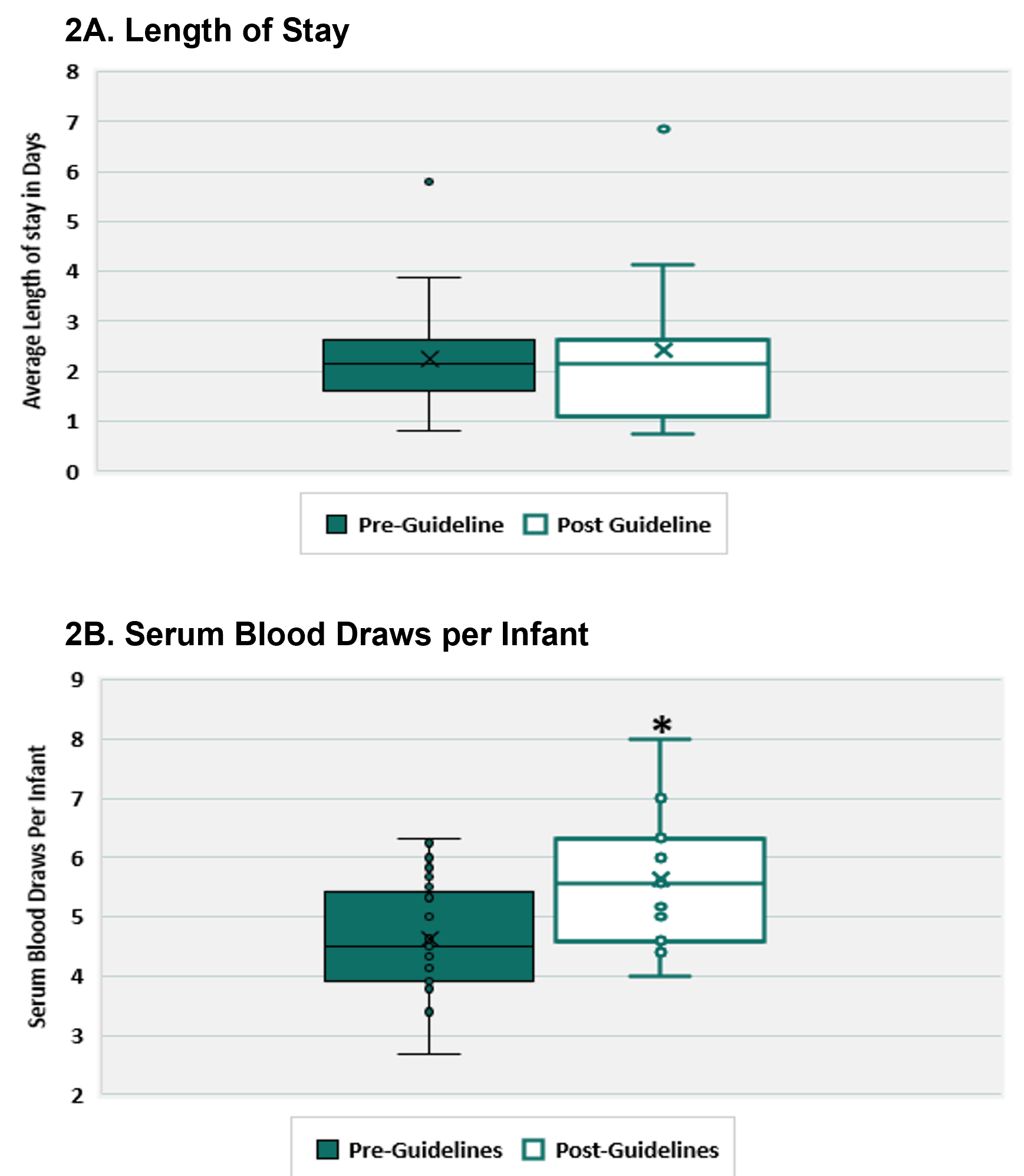Newborn Care
Session: Newborn Care
213 - Comparative Analysis of Hyperbilirubinemia Management Before and After 2022 AAP Guideline Implementation
Friday, May 3, 2024
5:15 PM - 7:15 PM ET
Poster Number: 213
Publication Number: 213.199
Publication Number: 213.199

Margaret B. Hackett, MPH (she/her/hers)
Student
Medical College of Wisconsin
Milwaukee, Wisconsin, United States
Presenting Author(s)
Background: The American Academy of Pediatrics (AAP) released updated guidelines for Neonatal Hyperbilirubinemia (NH) management in September 2022, which liberalized the threshold at which phototherapy (PT) should be initiated for infants ≥ 35 weeks gestational age (GA). The guideline’s goals included identifying those infants at highest risk of developing kernicterus and avoiding overuse of healthcare resources for benign jaundice.
Objective: This retrospective cohort analysis compares infants receiving intervention for NH pre- and post-implementation of the 2022 AAP NH guideline in a single center academic newborn nursery (NBN).
Design/Methods: Infants ≥ 35 weeks GA admitted to the NBN from July 2019 to July 2023 who received PT were included. Exclusion criteria were death and infants who received PT outside of the NBN. Cohorts pre- and post-2022 NH guideline implementation were compared using Mann-Whitney test, Chi-Square, Fisher’s exact and Student’s T-test utilizing SAS V9. P values < 0.05 were considered statistically significant.
Results: There were 264 infants included (197 pre-guidelines, 67 post-guidelines), with no significant difference in infant demographics before and after NH guideline implementation (Table 1). PT incidence per month did not significantly change (p=0.7). The treatment of hemolysis significantly increased (43.6% vs 62.7%, p=0.007), and treatment of physiologic/breastfeeding jaundice with PT significantly decreased (58.4% vs 41.8%, p=0.019) (Figure 1). The hour of life (HOL) at which PT was initiated was also significantly earlier (34.3HOL vs 25.6HOL, p=0.023). The number of blood draws per infant during the birth hospitalization increased significantly (avg 4 vs 5, p=0.004), but length of stay (LOS) did not significantly change (Figure 2).
Conclusion(s): After implementation of the 2022 NH guidelines PT utilization did not significantly change, but a greater proportion of the infant's receiving PT had hemolysis present and received more blood draws. This suggests that PT is being used for higher risk patients without prolonging NBN LOS through earlier detection and treatment. While we assessed available re-admission rates in our hospital system and our regional pediatric referral center, this data cannot address all NH healthcare utilization during the first month of life. However, it supports that the 2022 NH guideline facilitates earlier detection and treatment for high-risk infants, thereby achieving the guideline’s goals.



